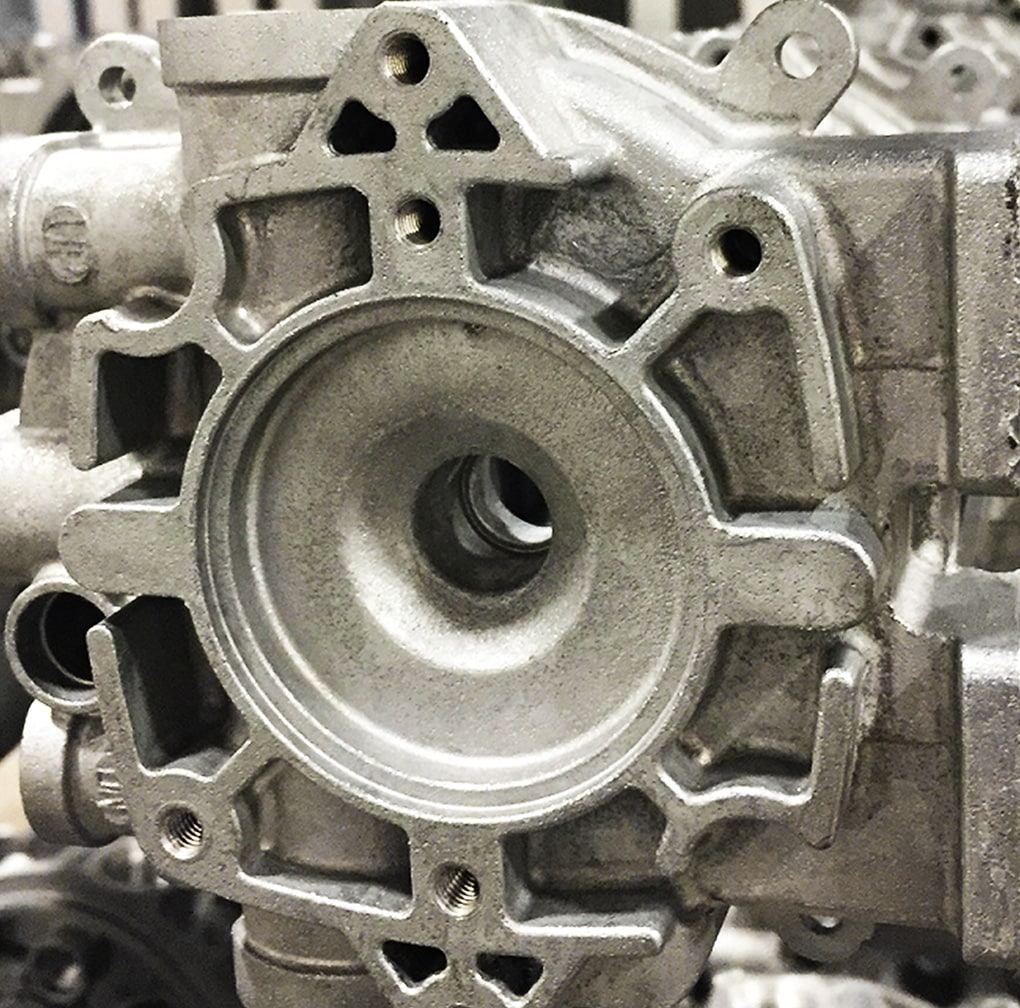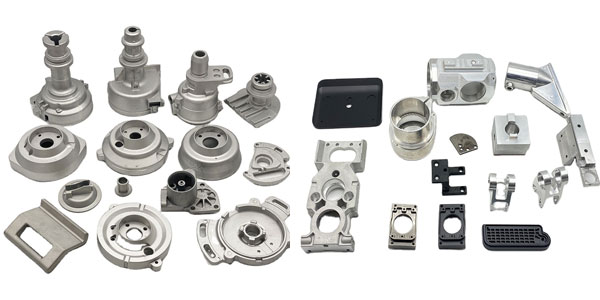Revealing the Conveniences and Practical Uses of Light Weight Aluminum Castings in Today's Market
Aluminum spreadings have actually ended up being increasingly appropriate in numerous markets due to their one-of-a-kind characteristics. Their light-weight nature and resistance to corrosion make them suitable for requiring applications. Furthermore, the premium strength-to-weight ratio uses significant benefits in design and manufacturing. As sectors remain to explore their potential, the complete extent of aluminum spreadings' applications and benefits stays to be totally uncovered. What lies ahead for this functional material?
The Lightweight Advantage of Aluminum Castings
Although several products are used in manufacturing, light weight aluminum spreadings stand out primarily due to their lightweight buildings. This particular makes light weight aluminum spreadings an eye-catching selection for various industries, particularly in aerospace and automobile applications, where weight decrease is essential for improving fuel efficiency and efficiency. The lightweight nature of aluminum allows producers to produce components that are less complicated to handle and install, ultimately lowering labor expenses.
The capacity to create complicated shapes without significant weight penalties makes it possible for developers to innovate while maintaining structural honesty. Light weight aluminum castings can properly change larger materials, resulting in significant financial savings in shipping and operational expenses. Their lightweight benefit likewise adds to enhanced item durability, as lighter components often result in lowered deterioration on machinery. On the whole, the lightweight residential or commercial properties of light weight aluminum spreadings give makers with a competitive side, fostering innovations in product style and efficiency throughout various markets.

Outstanding Rust Resistance
Aluminum castings possess an all-natural resistance to oxidation, which considerably enhances their long life in various environments. This inherent building not just contributes to their longevity however additionally lines up with the lightweight benefit that light weight aluminum provides. Consequently, light weight aluminum castings are progressively recognized for their remarkable corrosion resistance in many applications.

Normally Resistant to Oxidation
Among the standout features of aluminum castings is their extraordinary rust resistance, which stems from an all-natural oxidation process. When exposed to air, light weight aluminum responds to form a slim, protective layer of light weight aluminum oxide. This layer functions as a barrier versus more oxidation and safeguards the underlying metal from destructive elements such as wetness and salts. Unlike other steels, this oxide layer is self-repairing; if damaged, it promptly reforms when subjected to air. This distinct home enhances the durability of light weight aluminum castings in numerous atmospheres, making them perfect for applications in industries such as aerospace, automobile, and marine. Consequently, the all-natural resistance to oxidation greatly minimizes maintenance costs and raises the integrity of light weight aluminum spreadings in demanding conditions.
Light-weight Resilience Benefit
The lightweight nature of aluminum castings adds greatly to their durability, making them a useful choice in various markets. This remarkable longevity is mainly credited to light weight aluminum's innate resistance to rust, which is improved even more via anodizing and various other surface area therapies. Unlike many metals, light weight aluminum does not rust; instead, it forms a protective oxide layer that shields it from environmental damages. This residential property is specifically useful in markets such as vehicle and aerospace, where weight reduction is important without compromising stamina. In addition, the durability of light weight aluminum spreadings decreases upkeep prices and substitutes, providing financial benefits gradually. Their lightweight sturdiness and rust resistance setting aluminum spreadings as a remarkable material for modern-day manufacturing applications.
Superior Strength-to-Weight Proportion
A remarkable quality of light weight aluminum castings is their exceptional strength-to-weight ratio, which makes them extremely preferable in different applications. This innate building permits light weight aluminum spreadings to hold up against substantial stress while continuing to be light-weight, an important factor in industries such as aerospace, automotive, and production. Designers typically like aluminum spreadings for components that need both sturdiness and decreased weight, boosting gas effectiveness and performance.
The high strength-to-weight ratio likewise facilitates the design of detailed shapes and frameworks, making aluminum castings functional for complex applications. Additionally, the ability to preserve structural stability under tough conditions guarantees long life and reliability in items, from aircraft structures to vehicle components. This benefit adds to the expanding trend of using light weight aluminum castings in cutting-edge designs, inevitably resulting in boosted performance and efficiency across diverse fields. The superior strength-to-weight ratio of light weight aluminum spreadings positions them as a critical product in contemporary design and production.
Cost-Effectiveness in Production
Cost-effectiveness in aluminum spreading production is mostly accomplished via reduced material waste and reliable production processes. By enhancing styles and making use of advanced techniques, makers can lessen excess product use while keeping quality standards. This strategy not just lowers production costs however likewise contributes to a lot more lasting practices within the industry.
Decreased Material Waste
Decreasing product waste in aluminum casting processes greatly enhances production efficiency. By optimizing the design and manufacturing techniques, companies can minimize excess scrap and enhance resource usage. This reduction in waste not only lowers material prices yet additionally adds to a much more sustainable production model. The ability to recycle aluminum more assistances cost-effectiveness, enabling suppliers to recover and reuse materials without jeopardizing top quality. As the industry significantly concentrates on sustainability, reduced product waste lines up with ecological goals while concurrently boosting profitability. Eventually, efficient use of resources reinforces the affordable position of companies on the market, making light weight aluminum spreadings a beneficial option in numerous applications. The critical method to decreasing waste shows a dedication to both economic and environmental responsibility.
Reliable Manufacturing Processes
While typical manufacturing procedures can incur significant expenses, aluminum casting uses a more reliable option that boosts overall manufacturing success. This approach lessens material waste and enables specific control over the production procedure, bring about decreased labor and functional costs. The capability to generate complex forms with less steps even more simplifies manufacturing, adding to much shorter preparations. Furthermore, light weight aluminum's lightweight nature and exceptional thermal conductivity permit energy cost savings during manufacturing and in the final application. By making use of modern casting modern technologies, makers can attain higher throughput without sacrificing high quality. Aluminum casting stands out as a cost-efficient solution, making it an appealing alternative for businesses aiming to optimize their production processes in today's competitive market.
Convenience Throughout Industries
Light weight aluminum spreadings show remarkable versatility throughout numerous sectors, as they can be customized to fulfill certain demands and applications. In the vehicle market, light weight aluminum castings are made use of in engine blocks, transmission real estates, and wheels, using light-weight yet durable solutions see this that improve fuel efficiency. The aerospace industry additionally takes advantage of aluminum castings, using them in architectural elements and engine parts as a result of their strength-to-weight proportion.
In the durable goods industry, manufacturers use light weight aluminum spreadings for items ranging from pots and pans to furniture, giving both visual appeal and capability. The electronic devices industry makes use of light weight aluminum castings for real estates and heat sinks, guaranteeing reliable thermal administration. Additionally, the construction market leverages aluminum castings for architectural components and structural parts, improving resilience and layout versatility. This broad applicability highlights aluminum spreadings as a necessary resource, fulfilling the diverse demands of various markets while keeping high performance and integrity.
Sustainability and Ecological Effect
As sectors significantly prioritize lasting methods, light weight aluminum spreadings arise as an environment-friendly choice because of their recyclability and reduced ecological footprint. Light weight aluminum is one of one of the most recycled products worldwide, with the capacity to be repurposed several times without destruction of quality. This particular greatly decreases the need for basic materials and power intake related to primary aluminum production, which is energy-intensive.
In addition, light weight aluminum castings add to light-weight layouts, causing sustain performance in transportation applications such as aerospace and vehicle sectors. Their sturdiness and resistance to deterioration expand product lifespans, even more lessening waste and source usage over time. Additionally, lots of suppliers are taking on liable sourcing and visit this site right here environmentally friendly manufacturing techniques, improving the sustainability of light weight aluminum spreading procedures. Generally, aluminum castings stand for a practical service for companies aiming to lower their ecological influence while achieving efficiency and effectiveness.
Developments in Aluminum Casting Technologies
Recent innovations in light weight aluminum casting technologies have actually substantially boosted the effectiveness and quality of manufacturing processes. Technologies such as 3D Check This Out printing and advanced mold-making techniques have actually enabled producers to produce elaborate designs with decreased material waste. This shift not just improves the accuracy of cast parts but also reduces lead times, allowing for fast prototyping and faster market access.
The consolidation of innovative computer simulations aids in forecasting potential issues during spreading, leading to higher-quality results. Using light-weight alloys has actually also added to the growth of stronger, much more sturdy products, accommodating sectors ranging from automobile to aerospace
Furthermore, automated spreading procedures have emerged, decreasing human mistake and increasing production speed. Jointly, these developments are changing the aluminum casting landscape, driving greater competitiveness and sustainability in production. As markets proceed to evolve, these innovations will certainly play a crucial role in meeting future demands for efficiency and quality.
Frequently Asked Questions
Exactly How Do Aluminum Castings Compare to Other Metals in Regards To Thermal Conductivity?
Aluminum spreadings exhibit exceptional thermal conductivity compared to numerous steels, such as steel and iron - Metal Castings. Their lightweight nature and effective warm distribution make them suitable for applications calling for efficient thermal management in numerous industries
What Are the Typical Issues Found in Light Weight Aluminum Castings?
Usual flaws in aluminum castings include porosity, contraction, incorporations, and surface area irregularities. These issues commonly emerge from inappropriate air conditioning rates, inadequate mold and mildew style, or contaminations, impacting the total high quality and performance of the final item.
Can Aluminum Castings Be Recycled, and How?
Light weight aluminum spreadings can be reused efficiently. The procedure includes collecting, melting, and changing the light weight aluminum, which lessens waste and saves sources. This recycling adds to sustainability while keeping the material's homes for future use.
What Are the Typical Lead Times for Light Weight Aluminum Casting Manufacturing?
Usually, preparations for light weight aluminum casting manufacturing range from 2 to six weeks, relying on elements such as intricacy, tooling needs, and production quantity. Efficiency can enhance with recognized distributor relationships and maximized manufacturing procedures.
How Does the Surface Area Finish Affect Light Weight Aluminum Spreading Efficiency?
The surface coating considerably influences aluminum casting efficiency by influencing deterioration resistance, aesthetic high quality, and rubbing characteristics. A smoother surface boosts resilience and capability, while a rougher structure can boost attachment for subsequent finishes or therapies.
Many products are utilized in manufacturing, aluminum spreadings stand out primarily due to their lightweight residential or commercial properties. When exposed to air, light weight aluminum responds to form a thin, safety layer of aluminum oxide. Cost-effectiveness in aluminum casting production is primarily attained through lowered material waste and effective production procedures. Reducing material waste in aluminum casting processes considerably boosts manufacturing effectiveness. Inevitably, reliable usage of raw products reinforces the affordable placement of services in the market, making light weight aluminum spreadings a desirable alternative in numerous applications.